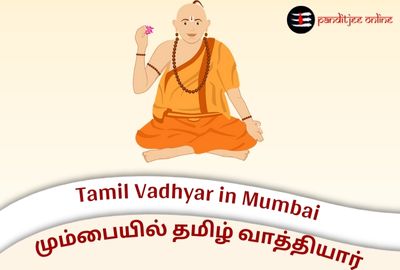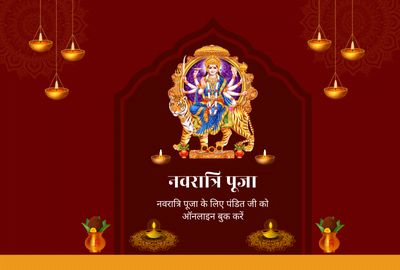Get ready to embrace the vibrant celebrations of Makar Sankranti 2024! This auspicious festival, known as the harvest festival of India, is marked with joy and fervor across the country. From flying colorful kites to relishing delicious traditional sweets, Makar Sankranti is a time to rejoice and connect with loved ones.
In this comprehensive guide, we will explore the rich traditions and festivities associated with Makar Sankranti. Discover the significance of this festival, rooted in ancient Hindu mythology, and gain insights into the various regional variations of celebrations.
Indulge in the mouthwatering delicacies that are an inherent part of Makar Sankranti celebrations, such as til laddoos, gur rewari, and khichdi. Uncover the age-old rituals, like taking holy dips in sacred rivers and offering prayers to the Sun God, that hold deep cultural and spiritual significance.
Join millions of people as they come together to celebrate this joyous occasion, spreading happiness and positive energy. Don’t miss out on the excitement and traditions that make Makar Sankranti a truly memorable experience.
Get ready to immerse yourself in the exuberant festivities of Makar Sankranti 2024 and create lasting memories with your loved ones.
Makar Sankranti 2024 Date, Tithi, Muhurat
Makar Sankranti is celebrated on the 14th of January every year. In 2024, it falls on a Sunday. The festival is observed based on the solar calendar, marking the transition of the Sun into the zodiac sign of Capricorn (Makar). It is believed that this transition brings longer days and is a harbinger of warmer weather and the onset of the harvest season.
The auspicious timing of Makar Sankranti is determined by the movement of the Sun. The exact moment of the transition is known as the “Makar Sankranti Muhurat.” Devotees perform various rituals during this time, such as taking dips in holy rivers and offering prayers to the Sun God. The Muhurat for Makar Sankranti 2024 is from 7:18 AM to 12:14 PM.
Makar Sankranti Significance
Makar Sankranti holds immense cultural and spiritual significance in Indian society. It is a festival that celebrates the transition from the cold winter months to the warmer days of spring. The name “Makar Sankranti” itself signifies the movement of the Sun into the zodiac sign of Capricorn, which is known as “Makar” in Hindi.
The festival is also associated with the harvest season in India, symbolizing the abundance of crops and the beginning of a new agricultural cycle. It is a time when farmers express gratitude for a bountiful harvest and pray for prosperity in the coming year.
According to Hindu mythology, Makar Sankranti is believed to be the day when Lord Vishnu ended the reign of the demon King Mahabali and restored the heavens to the gods. It is also said to be the day when Lord Surya (the Sun God) visits his son, Lord Shani (Saturn), who is said to reside in the zodiac sign of Capricorn.
History and Mythology of Makar Sankranti
Makar Sankranti has its roots in ancient Hindu mythology and is mentioned in various scriptures and epics. According to the Mahabharata, Bhishma Pitamah, a revered character in the epic, chose to leave his mortal body on the day of Makar Sankranti. It is believed that those who die on this day attain salvation and are liberated from the cycle of birth and death.
Another popular legend associated with Makar Sankranti is the story of Lord Surya and his son, Lord Shani. It is said that Lord Surya visits his son on this day and showers him with blessings. Devotees believe that taking dips in sacred rivers during this time cleanses them of their sins and brings them closer to the divine.
The history of Makar Sankranti is also intertwined with the celebration of the harvest season. In ancient times, farmers would thank the Sun God for a good harvest and seek his blessings for a prosperous future. The festival is a way of expressing gratitude for the abundance of nature and the hard work of farmers.
Rituals of Makar Sankranti across India
Makar Sankranti is celebrated with great enthusiasm and a variety of rituals across different regions of India. Each state has its unique customs and traditions associated with the festival. However, there are some common rituals that are observed throughout the country.
One of the most significant rituals of Makar Sankranti is taking holy dips in sacred rivers. Devotees believe that bathing in rivers like the Ganges, Yamuna, and Godavari during this time purifies the soul and absolves them of their sins. The holy city of Prayagraj (formerly Allahabad) witnesses a massive gathering of devotees during this period, as they come together to take part in the Kumbh Mela.
Offering prayers to the Sun God is another important aspect of Makar Sankranti. Devotees wake up early in the morning and perform aarti (ritualistic worship) to welcome the Sun God. They offer flowers, fruits, and sweets as a mark of respect and gratitude. The warmth and energy of the Sun are regarded as essential for a prosperous and healthy life.
Flying kites is a popular tradition associated with Makar Sankranti, especially in the state of Gujarat. People of all ages come together on rooftops to fly colorful kites and engage in friendly competitions. The sky is filled with vibrant kites of various shapes and sizes, creating a mesmerizing sight.
offer flowers, fruits, and sweets as a mark of respect and gratitude. The warmth and energy of the Sun are regarded as essential for a prosperous and healthy life.
Flying kites is a popular tradition associated with Makar Sankranti, especially in the state of Gujarat. People of all ages come together on rooftops to fly colorful kites and engage in friendly competitions. The sky is filled with vibrant kites of various shapes and sizes, creating a mesmerizing sight.
Traditions of Makar Sankranti
Makar Sankranti is a festival that is celebrated with great fervor and enthusiasm across India. The traditions associated with this festival vary from region to region, but they all share a common theme of joy, togetherness, and gratitude.
One of the most significant traditions of Makar Sankranti is the preparation and consumption of special delicacies. Sweet treats like til laddoos (sesame seed balls), gur rewari (jaggery-coated sweets), and khichdi (a savory dish made of rice and lentils) are prepared and shared among family and friends. These traditional dishes are believed to bring good luck and prosperity.
Another tradition of Makar Sankranti is the exchange of til (sesame seeds) and gur (jaggery) among loved ones. It is believed that these ingredients have purifying properties and can ward off evil spirits. By sharing til and gur, people express their love and wishes for the well-being of their family and friends.
Chanting mantras and performing pujas (Satyanarayan katha, Shuddhi Puja and Havan, Griha Pravesh Puja) is an integral part of Makar Sankranti celebrations. Devotees gather in temples and homes to recite sacred hymns and seek the blessings of the deities. The sound of mantras and the fragrance of incense create a divine atmosphere, filling the air with positive energy.
Chant mantras on the day of Makar Sankranti
Makar Sankranti is celebrated with great pomp and show in different states of India, each showcasing its unique cultural heritage and traditions. Let’s explore some of the regional variations of Makar Sankranti celebrations.
In the state of Gujarat, Makar Sankranti is synonymous with the International Kite Festival. The city of Ahmedabad comes alive with colorful kites filling the sky as people engage in friendly kite-flying competitions. The festival attracts participants from all around the world, making it a truly global event.
In Maharashtra, Makar Sankranti is celebrated as “Makar Sankrant” or “Tilgul.” People exchange tilgul ladoos (sweet sesame seed balls) and greet each other with the words “Tilgul ghya, god god bola” which means “Accept this sweet and speak sweet words.” The festival is also marked by the tradition of offering prayers to Lord Surya.
In the southern state of Tamil Nadu, Makar Sankranti is known as “Pongal.” It is a four-day festival that includes various rituals and customs. The highlight of the celebrations is the preparation of Pongal, a special dish made of newly harvested rice, lentils, and jaggery. People decorate their homes with colorful kolams (rangoli) and offer prayers to the Sun God.
In the eastern state of West Bengal, Makar Sankranti is celebrated as “Poush Parbon” or “Makar Sankrant.” The festival is marked by the famous Ganga Sagar Mela, where millions of devotees gather to take a holy dip at the confluence of the Ganges River and the Bay of Bengal. The mela is considered one of the largest religious gatherings in India.
Regional Celebrations of Makar Sankranti in India
Makar Sankranti is a festival that brings joy, togetherness, and a sense of gratitude. It is a time to celebrate the abundance of nature, express gratitude for a bountiful harvest, and seek blessings for a prosperous future. The traditions and festivities associated with Makar Sankranti vary across different regions of India, but they all share a common theme of spreading happiness and positive energy.
So, this Makar Sankranti 2024, immerse yourself in the vibrant celebrations, fly colorful kites, relish delicious traditional sweets, and create lasting memories with your loved ones. Embrace the rich traditions and connect with the cultural heritage of India as you join millions of people in celebrating this auspicious festival.
Wishing you all a happy and prosperous Makar Sankranti!
Conclusion
Makar Sankranti holds deep cultural and spiritual significance in Hindu mythology. It is believed to mark the transition of the sun into the zodiac sign of Capricorn (Makar) and the end of the winter solstice. This transition is considered extremely auspicious and symbolizes the shift from darkness to light, ignorance to knowledge, and winter to spring.
The festival also celebrates the harvest season, with farmers expressing gratitude for a bountiful harvest and praying for prosperity and abundance in the upcoming year. Makar Sankranti is a time of new beginnings, hope, and renewal.
FAQ
1. What is the significance of Makar Sankranti?
Makar Sankranti is a festival that marks the transition of the Sun into the zodiac sign of Capricorn. It symbolizes the end of the winter season and the beginning of longer days and warmer weather. The festival also holds cultural and spiritual significance as it celebrates the harvest season and expresses gratitude for the abundance of nature.
2. When is Makar Sankranti 2024?
Makar Sankranti 2024 falls on the 14th of January, which is a Sunday.
3. What are the traditional sweets prepared during Makar Sankranti?
Some of the traditional sweets prepared during Makar Sankranti include til laddoos (sesame seed balls), gur rewari (jaggery-coated sweets), and khichdi (a savory dish made of rice and lentils).
4. What are the regional variations of Makar Sankranti celebrations in India?
Makar Sankranti is celebrated with different customs and traditions in various states of India. Some of the regional variations include the International Kite Festival in Gujarat, the Tilgul celebrations in Maharashtra, the Pongal festival in Tamil Nadu, and the Ganga Sagar Mela in West Bengal.
5. What are the common rituals observed during Makar Sankranti?
Some of the common rituals observed during Makar Sankranti include taking holy dips in sacred rivers, offering prayers to the Sun God, flying kites, exchanging til (sesame seeds) and gur (jaggery), and chanting mantras. These rituals hold cultural and spiritual significance and are believed to bring good luck and prosperity.




